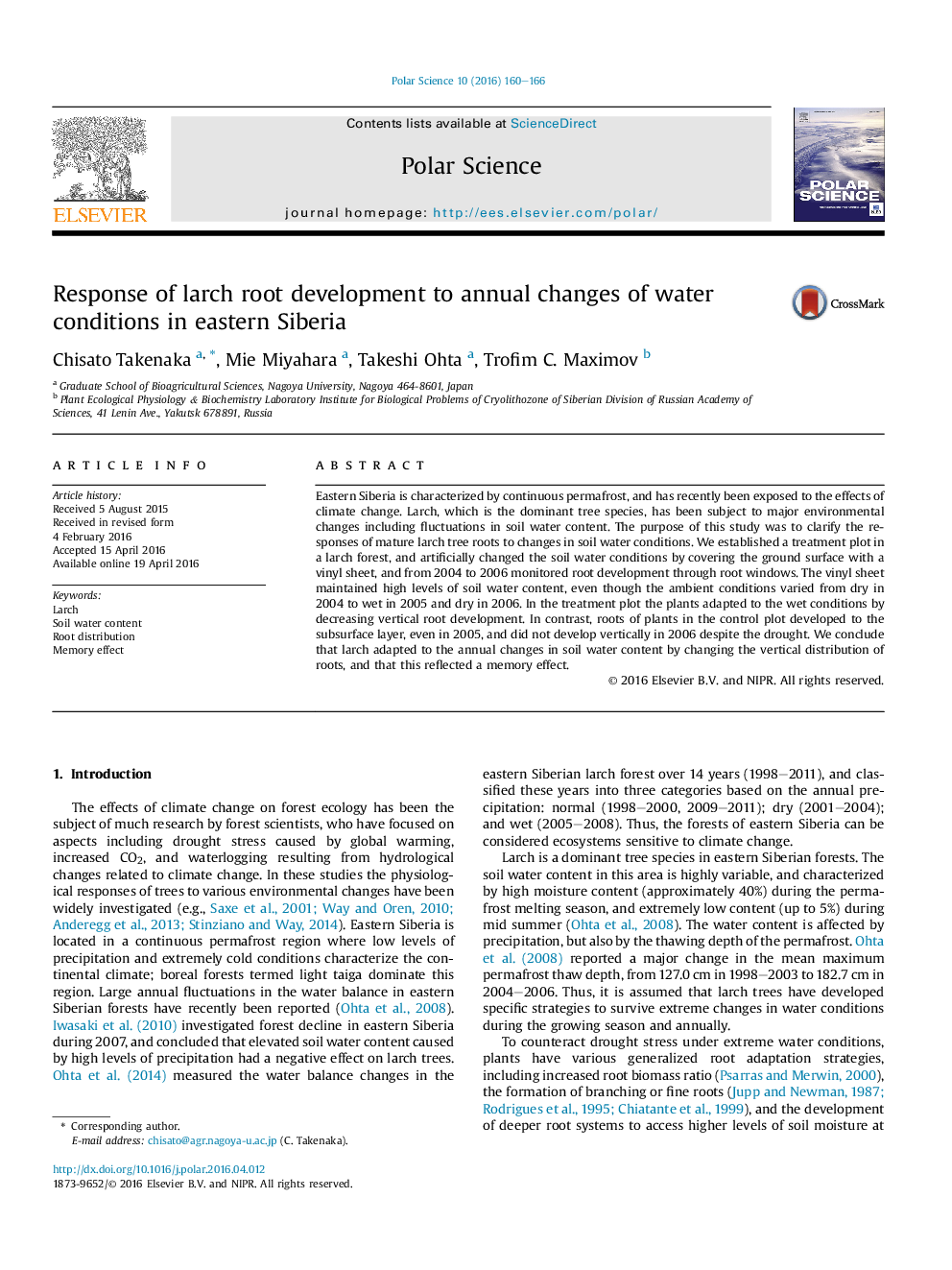| Article ID | Journal | Published Year | Pages | File Type |
|---|---|---|---|---|
| 4683158 | Polar Science | 2016 | 7 Pages |
Abstract
Eastern Siberia is characterized by continuous permafrost, and has recently been exposed to the effects of climate change. Larch, which is the dominant tree species, has been subject to major environmental changes including fluctuations in soil water content. The purpose of this study was to clarify the responses of mature larch tree roots to changes in soil water conditions. We established a treatment plot in a larch forest, and artificially changed the soil water conditions by covering the ground surface with a vinyl sheet, and from 2004 to 2006 monitored root development through root windows. The vinyl sheet maintained high levels of soil water content, even though the ambient conditions varied from dry in 2004 to wet in 2005 and dry in 2006. In the treatment plot the plants adapted to the wet conditions by decreasing vertical root development. In contrast, roots of plants in the control plot developed to the subsurface layer, even in 2005, and did not develop vertically in 2006 despite the drought. We conclude that larch adapted to the annual changes in soil water content by changing the vertical distribution of roots, and that this reflected a memory effect.
Related Topics
Physical Sciences and Engineering
Earth and Planetary Sciences
Earth and Planetary Sciences (General)
Authors
Chisato Takenaka, Mie Miyahara, Takeshi Ohta, Trofim C. Maximov,
